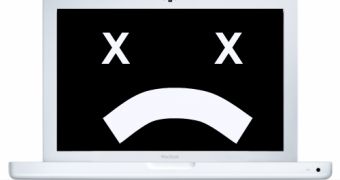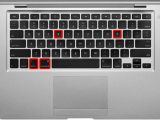You turned on your MacBook, MacBook Air or MacBook Pro and nothing happens. You tried everything that you could think of to bring it back to life, but everything failed. What now? Most individuals would just pack it up and leave the people at the Apple Retail Store or an Apple Authorized Service Provider to deal with it.
Other people would just try to find a solution on their own using the powers of the Internet and all the pieces of advice they can get related to their problems. They will try anything they can find about the exact problem their MacBook is experiencing, and some of these people might discover a way to make their MacBook come to life on their own.
While this second approach might prove successful for a small percentage of the total number of individuals going this way, for the rest of them, it might just get their portable Macs into more trouble than the initial issue did in the first place.
Regardless of the category you fit in and your Internet search prowess, according to a short support article published here, there are a number of safe and Apple-approved procedures you can go through to make sure your MacBook needs that trip.
First tip If your MacBook does not give any signs of life, simply disconnect any peripherals connected to the system (printers, hubs, and even 3rd-party keyboards or mice), and give it another run for the money by trying to turn it on. If it all goes well and your MacBook starts up now, you at least know that the problem was due to a defective device connected to your portable Mac.
Second tip Try unplugging the power adapter from both the electrical outlet and from your MacBook, MacBook Air, or MacBook Pro. Now, make sure the power outlet the MacBook was connected to works by plugging it in any electrical appliance you have nearby. After unplugging the test electrical appliance and verifying that everything is OK with the electrical source, wait a minute or two and just plug the power adapter back into your MacBook and the power outlet.
When you do that, the LEDs on the MacBook’s connector should light up green or amber (depending on your machine’s battery-charge level). If this does not happen, you now know that your battery is drained and that the power adapter is defective.
Third tip Should the portable that is giving you all these troubles be a MacBook or MacBook Pro, you can give it a quick and easy battery-level check. To do this, you have to press the small button on the battery or on the side of your MacBook. Next, you should see the lights that indicate your computer battery's level of charge.
In case you see only a single light blinking, you know that the one responsible for your dead MacBook is the battery, which you now have to recharge by plugging in the power adapter connected to an electrical outlet.
Fourth tip Another possible problem could be a MagSafe port not working correctly. Look for any kind of debris inside it port that might prevent it from connecting the power adapter correctly to your MacBook. On the adapter, take a quick look at the DC connector for any type of debris and carefully check if any of the pins are missing, are bent, or stuck down.
If you come up with results after any of these procedures, go to Apple’s support website to the 'Troubleshooting MagSafe adapters' article and follow the available instructions on cleaning the adapter yourself.
Fifth tip This is the simplest way to make sure that your MacBook is not just stuck because of an operating-system flaw. All you have to do is press the control key, the command key, and the power button (Ctrl+Cmd+Pwr) at the same time and hold on pressing them for about three seconds to try to restart the computer. If this works, you now have a functioning MacBook and you know that everything was OK at a physical level.
Sixth tip Out of all the people that have trouble powering up their MacBook’s and end up at the Apple Retail Store to solve their problem, a good percentage are using an adapter that was not designed for their computer, an adapter that is not able to charge their Mac’s battery and that, thus, renders their computer unusable.
If you have changed your MacBook’s power adapter and don’t know which one is compatible with your computer, go to Apple’s support website (http://support.apple.com/kb/HT1565) and find that out
Seventh tip If everything mentioned above has failed, you can try to reset your portable Mac’s SMC. As Apple says in a support article published here, on MacBook and MacBook Pro systems, you can do this by removing the AC power, taking out the Mac’s battery and then holding down the laptop’s power button for five seconds.
If you own a problematic MacBook Air, press the (left) Shift-Control-Option key combination along with the power button once. Important: you must use the keys on the left side of the MacBook Air keyboard.
Eighth tip Apart from resetting your MacBook’s SMC, Apple has also published a how-to piece on how you can also reset its PRAM if your Mac experiences problems. First press the power button and then hold down the Cmd-Option-P-R keys simultaneously, until you hear the startup chime at least one additional time after the initial sound.
Ninth tip If you tried to upgrade your MacBook’s memory before experiencing startup problems, you have to make sure that the installed memory is compatible with your computer and, if this is so, check if the memory is correctly installed.
If everything is OK with the additional memory and the MacBook still does not want to turn on, remove the new memory and see if it starts up properly without it. If it does, you have found the culprit for all your problems.
If the above procedures don't work for you and your MacBook is still as dead as before, all that remains for you to do is the inevitable: schedule a service appointment with either an Apple Retail Store or an Apple Authorized Service Provider.
Should you have further tips that might get others out of trouble when their MacBooks are acting up, share your knowledge with us and the readers in the comments.

 14 DAY TRIAL //
14 DAY TRIAL // 
